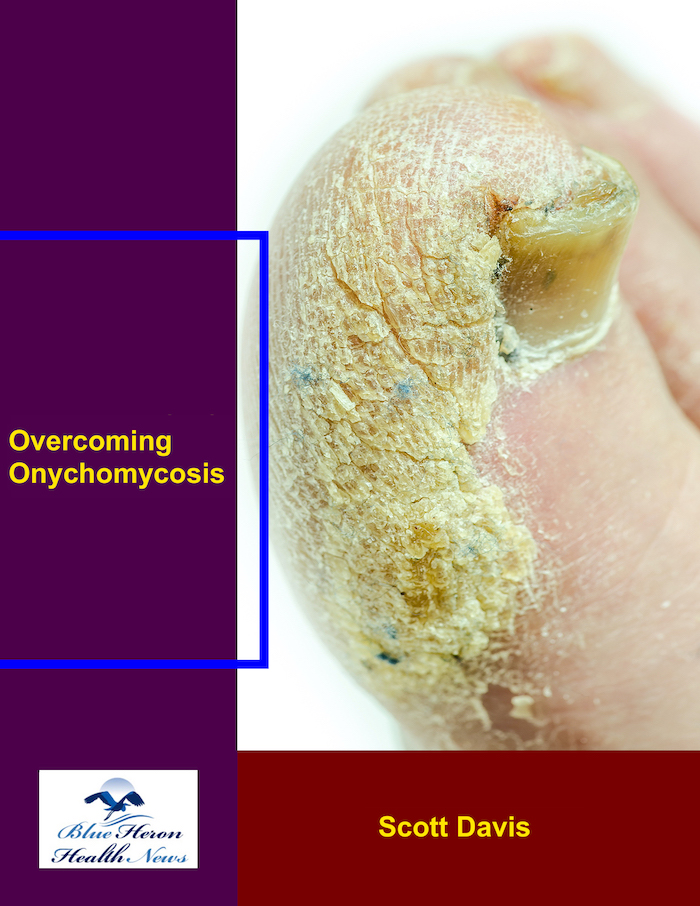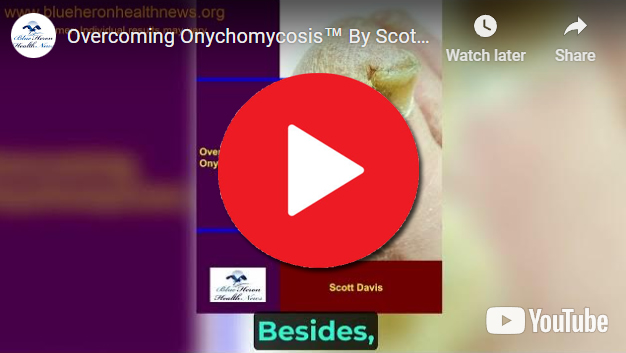
Overcoming Onychomycosis™ By Scott Davis It is a simple, natural, and all-in-one solution for onychomycosis. The program can help you to treat your nail fungus naturally. Once you follow this program, you do not need to spend on expensive treatments to prevent a recurrence. In brief, you can have a proven solution for your chronic nail fungus. Besides, the program is easy to follow, and most users find it effective against onychomycosis.
How long does it take to see results from onychomycosis treatment?
The timeline for seeing results from onychomycosis (fungal nail infection) treatment can vary significantly based on several factors, including the type of treatment used, the severity of the infection, the specific fungus involved, and the individual’s nail growth rate. Here’s a detailed overview of what to expect in terms of treatment duration and the timeline for visible improvements:
1. Type of Treatment
Topical Antifungal Treatments
Topical antifungal treatments, such as creams, ointments, gels, or medicated nail lacquers, are applied directly to the affected nails.
- Duration of Treatment: Typically, these treatments are applied daily and can require a lengthy treatment period, often ranging from 6 to 12 months or longer. This is because topical treatments must penetrate the nail to reach the infection, which can be challenging, especially if the nail is thickened or the infection is deep.
- Visible Results: Visible improvement in the nail may take several months. Patients might start noticing changes in nail color, reduction in nail thickness, or less debris under the nail after a few months of consistent use. Full clearance of the infection, indicated by the growth of a healthy nail, can take up to a year or longer, depending on the rate of nail growth and the extent of the infection.
Oral Antifungal Medications
Oral antifungal medications, such as terbinafine, itraconazole, or fluconazole, are taken by mouth and work systemically.
- Duration of Treatment: The standard treatment duration for oral antifungals varies. Terbinafine is usually prescribed for 6 weeks for fingernail infections and 12 weeks for toenail infections. Itraconazole may be prescribed in pulse doses (e.g., one week on, three weeks off) or continuous dosing for similar durations.
- Visible Results: Patients may start noticing improvements within 6 to 12 weeks of starting treatment, as the infected portion of the nail grows out and is replaced by new, healthy nail growth. However, full clearance can take much longer, potentially up to 6 months for fingernails and 12-18 months for toenails, depending on the nail growth rate and the severity of the infection.
Laser Therapy
Laser therapy uses focused light to target and destroy fungal cells.
- Duration of Treatment: Laser treatment sessions are typically shorter and can vary in number. Patients may require 1-3 sessions, with some protocols recommending more, spaced several weeks apart.
- Visible Results: Improvement can often be seen within a few months after treatment, as the damaged nail grows out and is replaced by new, healthy nail. However, complete clearance and regrowth of a healthy nail can take 6-12 months or longer, similar to other treatments, depending on the nail growth rate and the extent of the infection.
Surgical or Chemical Nail Removal
In some cases, partial or complete removal of the infected nail may be necessary, either surgically or chemically, using urea or other substances.
- Duration of Treatment: Nail removal is typically a one-time procedure, followed by the application of topical antifungals or other treatments.
- Visible Results: New nail growth will begin soon after the nail is removed, but the timeline for complete regrowth varies. Fingernails typically regrow fully in about 4-6 months, while toenails can take 12-18 months to fully regrow.
2. Factors Affecting Treatment Timeline
Severity of Infection
- Mild to Moderate Infections: These may respond more quickly to treatment, with visible improvement often seen within a few months.
- Severe Infections: Cases with extensive nail involvement, thickening, or deformation may take longer to respond, and complete clearance may require longer treatment durations.
Type of Fungus
- Dermatophytes vs. Yeasts and Molds: Dermatophyte infections tend to respond more predictably to treatment, whereas infections caused by yeasts or non-dermatophyte molds may be more resistant and require longer or more intensive treatment.
Nail Growth Rate
- The rate of nail growth plays a crucial role in the timeline for seeing results. Fingernails grow at an average rate of 2-3 mm per month, while toenails grow more slowly, at about 1 mm per month. Full clearance is often only confirmed when the entire infected nail has grown out and been replaced by healthy nail.
Adherence to Treatment
- Consistent and correct use of prescribed treatments is essential for success. Missed doses, incorrect application of topical treatments, or premature discontinuation of therapy can delay improvement and increase the likelihood of recurrence.
Underlying Health Conditions
- Conditions such as diabetes, poor circulation, or immune system disorders can slow down healing and extend the time needed to see results.
3. Monitoring and Follow-Up
Regular Monitoring:
- Regular follow-up appointments with a healthcare provider are important to monitor progress, adjust treatment if necessary, and manage any side effects.
Preventive Measures:
- After successful treatment, ongoing preventive measures, such as maintaining good nail hygiene, wearing breathable footwear, and avoiding nail trauma, are crucial to prevent reinfection.
Conclusion
The timeline for seeing results from onychomycosis treatment varies widely based on the treatment method, the severity of the infection, and individual patient factors. While some improvement can be seen within a few months, complete clearance of the infection often takes much longer, especially for toenails. It’s important for patients to have realistic expectations, adhere to their treatment regimen, and remain patient as they await full nail regrowth and clearance of the infection. Regular follow-up with a healthcare provider can help ensure the best possible outcomes.
How can home remedies help with onychomycosis?
Home remedies for onychomycosis (fungal nail infection) are often considered by individuals seeking alternative or complementary treatments to traditional medical approaches. While these remedies are generally more accessible and may have fewer side effects, it’s important to note that scientific evidence supporting their effectiveness is often limited or anecdotal. Home remedies may be more suitable for mild cases of onychomycosis or as adjunct treatments alongside conventional therapies. Here’s an overview of some commonly used home remedies and how they may help with onychomycosis:
1. Tea Tree Oil
Properties:
Tea tree oil is a natural essential oil with antifungal, antibacterial, and antiseptic properties.
Application:
- Apply a few drops of 100% pure tea tree oil directly to the affected nail and surrounding skin daily.
- Alternatively, dilute the oil with a carrier oil (like coconut or olive oil) to reduce the risk of skin irritation.
How It May Help:
Tea tree oil may help by killing the fungi causing the infection and preventing its spread. Its antiseptic properties can also reduce the risk of secondary bacterial infections.
2. Vinegar (Apple Cider or White Vinegar)
Properties:
Vinegar has antifungal properties and creates an acidic environment that may inhibit fungal growth.
Application:
- Mix equal parts vinegar and water to create a foot soak solution.
- Soak the affected nails for 15-20 minutes daily, then dry thoroughly.
How It May Help:
The acidity of vinegar can help inhibit fungal growth and reduce the infection. It may also help alleviate symptoms like discoloration and thickening of the nails.
3. Vicks VapoRub
Properties:
Vicks VapoRub contains menthol, camphor, and eucalyptus oil, which have antifungal and antibacterial properties.
Application:
- Apply a small amount of Vicks VapoRub to the affected nails daily, covering the nail completely.
How It May Help:
The combination of antifungal agents in Vicks VapoRub may help reduce the fungal infection and improve the appearance of the nail.
4. Baking Soda
Properties:
Baking soda has antifungal properties and can help neutralize odors associated with fungal infections.
Application:
- Mix baking soda with water to create a paste and apply it to the affected nails, or sprinkle it inside shoes and socks.
How It May Help:
Baking soda may help absorb moisture, keeping the feet dry and less hospitable to fungal growth. It can also reduce odors and alleviate symptoms.
5. Garlic
Properties:
Garlic contains allicin, a compound with strong antifungal and antimicrobial properties.
Application:
- Crush a few garlic cloves and apply the paste directly to the affected nails. Cover with a bandage and leave for 30 minutes, then rinse off.
- Alternatively, take garlic supplements, but consult a healthcare provider before starting any supplement regimen.
How It May Help:
Garlic’s antifungal properties may help combat the infection, while its antimicrobial effects can prevent secondary infections.
6. Oregano Oil
Properties:
Oregano oil contains thymol and carvacrol, which have antifungal, antibacterial, and anti-inflammatory properties.
Application:
- Dilute oregano oil with a carrier oil and apply it to the affected nails daily.
How It May Help:
Oregano oil may help reduce fungal growth and alleviate inflammation associated with the infection.
7. Coconut Oil
Properties:
Coconut oil contains medium-chain fatty acids, such as lauric acid, which have antifungal properties.
Application:
- Apply a small amount of coconut oil to the affected nails and surrounding skin several times a day.
How It May Help:
Coconut oil may help inhibit fungal growth and moisturize the skin, reducing irritation and discomfort.
8. Lemon Juice
Properties:
Lemon juice has antifungal and antiseptic properties and can help lighten nail discoloration.
Application:
- Apply fresh lemon juice to the affected nails daily, allowing it to sit for 15-20 minutes before rinsing off.
How It May Help:
The acidity of lemon juice may help inhibit fungal growth and improve the appearance of discolored nails.
9. Epsom Salt
Properties:
Epsom salt has antifungal properties and can help reduce inflammation and soothe irritated skin.
Application:
- Add Epsom salt to warm water and soak the affected nails for 15-20 minutes daily.
How It May Help:
Epsom salt soaks can help reduce fungal activity and alleviate symptoms like swelling and discomfort.
10. Preventive Measures Alongside Home Remedies
Proper Nail Hygiene:
- Keep nails clean, dry, and well-trimmed. Avoid cutting the cuticles, as this can introduce infection.
Footwear and Socks:
- Wear breathable, moisture-wicking socks and shoes to reduce moisture build-up, which can promote fungal growth.
Avoiding Spread:
- Disinfect nail tools and avoid sharing personal items like towels and nail clippers to prevent spreading the infection.
Conclusion
While home remedies for onychomycosis can be helpful, especially in mild cases, they often work best as complementary treatments alongside conventional therapies. The effectiveness of these remedies varies, and they typically require consistent and prolonged use to see results. It’s essential for individuals to consult with a healthcare provider for proper diagnosis and to discuss the most appropriate treatment options, especially in moderate to severe cases of onychomycosis. Additionally, monitoring the progress and any potential side effects is crucial to ensure safety and effectiveness.
Overcoming Onychomycosis™ By Scott Davis It is a simple, natural, and all-in-one solution for onychomycosis. The program can help you to treat your nail fungus naturally. Once you follow this program, you do not need to spend on expensive treatments to prevent a recurrence. In brief, you can have a proven solution for your chronic nail fungus. Besides, the program is easy to follow, and most users find it effective against onychomycosis.
